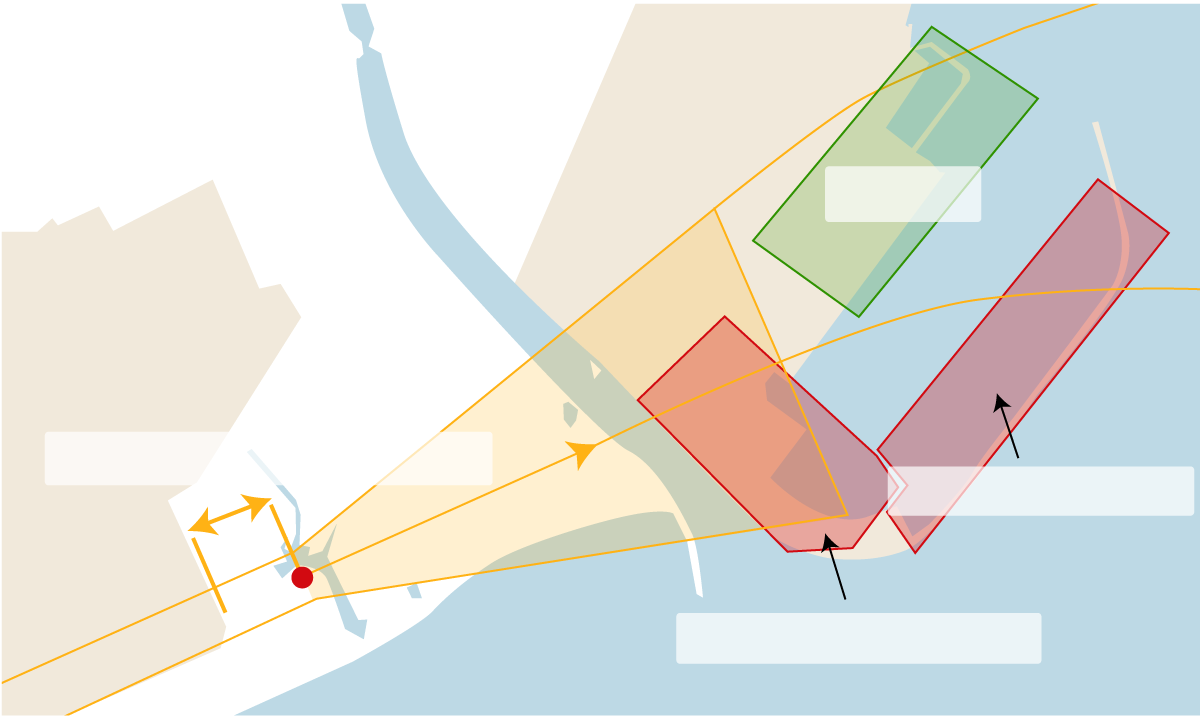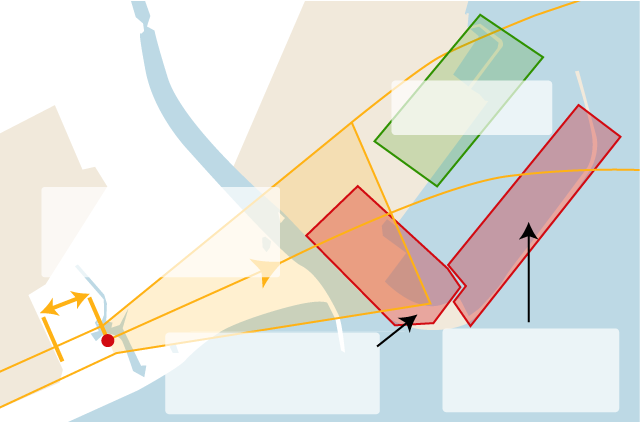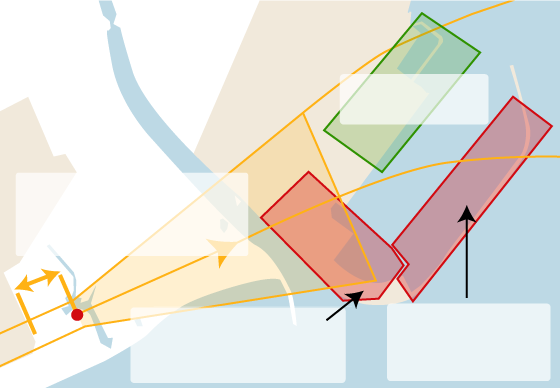Raising the runway by 1%: the unknown agreement that led to the port accepting the expansion of El Prat
El Prat will raise the runway to lessen the impact on cranes and containers on the other side of the Llobregat River.


BarcelonaWith the expansion agreement of El Prat One of the main conflicts that the airport has been dragging on for decades has also been resolved. If Barcelona Airport is very close to the city, it is also close to the Catalan capital's other major infrastructure. On the other side of the Llobregat River is the Port of Barcelona, which has also been growing towards the city of El Prat, concentrating more activity in that area.
Containers are the port's main business, accounting for nearly 50% of revenue, and the ships that transport them require cranes to unload the cargo, which are increasingly taller because the ships are getting bigger. The problem lies in all the interference these metal towers generate on the airport's navigation radars. The back-and-forth began with the extension of the airport's two main runways with the previous expansion, when the parallel runways were lengthened in the early 2000s, an expansion that directly impacted the southern area of the port. The port cranes did not affect the landing or takeoff of aircraft, but they did cause minor interference and could hamper the work of the radars responsible for locating aircraft in airspace and determining their desired altitude—not communicating with them—if more were added.
This is one of the points that has been resolved in the agreement reached by Aena, Puertos del Estado, and Enaire. The radar located in the eastern area of the airport, between the two parallel runways, will be moved to the other end, on land ceded by Aena, to prevent the cranes being installed at the BEST terminal, at the Muelle Prat, affecting its activity. The agreement for the relocation has just been signed, with a planned investment of nine million euros split equally between the port and Enaire. Ports announced it had ordered two, and their arrival is scheduled for 2026.
The relocation of the radar is not linked to the extension of the third runway at El Prat, but it has been finalized along with the rest of the points affected by the new airport expansion. Aside from the radio easements generated by the radars of any surrounding airport, there are physical limitations. That is, the infrastructure requires a safety space to guarantee landings and takeoffs on the runways, where nothing can be placed. Adding space for the third runway directly impacts the future Cataluña wharf at the Port of Barcelona, which is still awaiting an environmental impact statement for construction to begin. The new wharf will be located directly in front of the Prat wharf and directly conflicts with the safety space required by the third runway if it were extended further. In the initial proposals, when it was to be extended by 500 meters, the port was to reduce its maximum height by 10 meters to avoid impacting airport activity, a figure equivalent to almost three cargo containers. "It was unacceptable," Carbonell emphasizes.
Negotiations with Aena to reduce the impact began here. The proposal presented in mid-June reduced the 500 meters to 440 meters, which implies a nine-meter limit for the port. But it wasn't enough. To minimize the impact on port activity, aircraft will have to maneuver to reduce the safety space they need around them. On the rare occasions when the wind doesn't recommend heading towards Gavà and it would be better to head towards the port, the planes will make a turn towards the sea shortly after takeoff. This will be very similar to what they do when taking off for towns like Gavà or Castelldefels, when they quickly turn towards the sea and thus reduce the noise they cause to the residents.
This turn in the aircraft's maneuver diverts the affected space to the future Catalunya dock. However, in the case of landings, this cannot be done because they head towards the airport in a straight line, coinciding directly with the Prat dock. The solution in this regard is needed because the extension of the third runway is needed for takeoffs, not for landings, where the runway will remain as short as it is now. With the expansion of El Prat Airport, Aena aims to attract aircraft that operate large intercontinental flights. They need the space for takeoffs because that's when they have full tanks, but not when they're arriving at their destination.
With takeoffs diverted towards the sea, no matter how quickly the planes turn, some of them fly over the port. To reduce the maximum height the port could have, the airport plans to raise the runway like a ramp and increase its slope to the maximum possible, 1%, over 700 meters. This modification is imperceptible to the human eye, but key in calculating the safety space that must surround the airport. With this new slope of up to seven meters at the northern end of the airport, the meters that affected the maximum height of the port are reduced from nine meters to two meters. "Given all these commitments by Aena, at a significant cost, we agree with the project. It is affordable due to the balance we have always demanded. The airport is very important, but so is the port. Both are infrastructures of general interest. Here it is not a question of competing between who is more relevant, but of finding a balance for both parties." Carbonell, who has dedicated many years to resolving this conflict.
Many issues have been resolved, but not everything is yet to be finalized. The remaining loose ends lie in the future Catalunya dock, which will be a twin terminal of the Prat dock. When the new road and rail accesses finally arriveThis is where container activity will be concentrated. Therefore, there will also be cranes, with the expectation that they will exceed the 90 meters of those at the Prat dock and be between 110 and 115 meters. All this ironwork will also generate interference with the airport, and simulations are currently being carried out to calculate the impact. Once this is resolved and the environmental declaration is approved, the Port of Barcelona will be able to launch the tender for the Catalunya dock.



